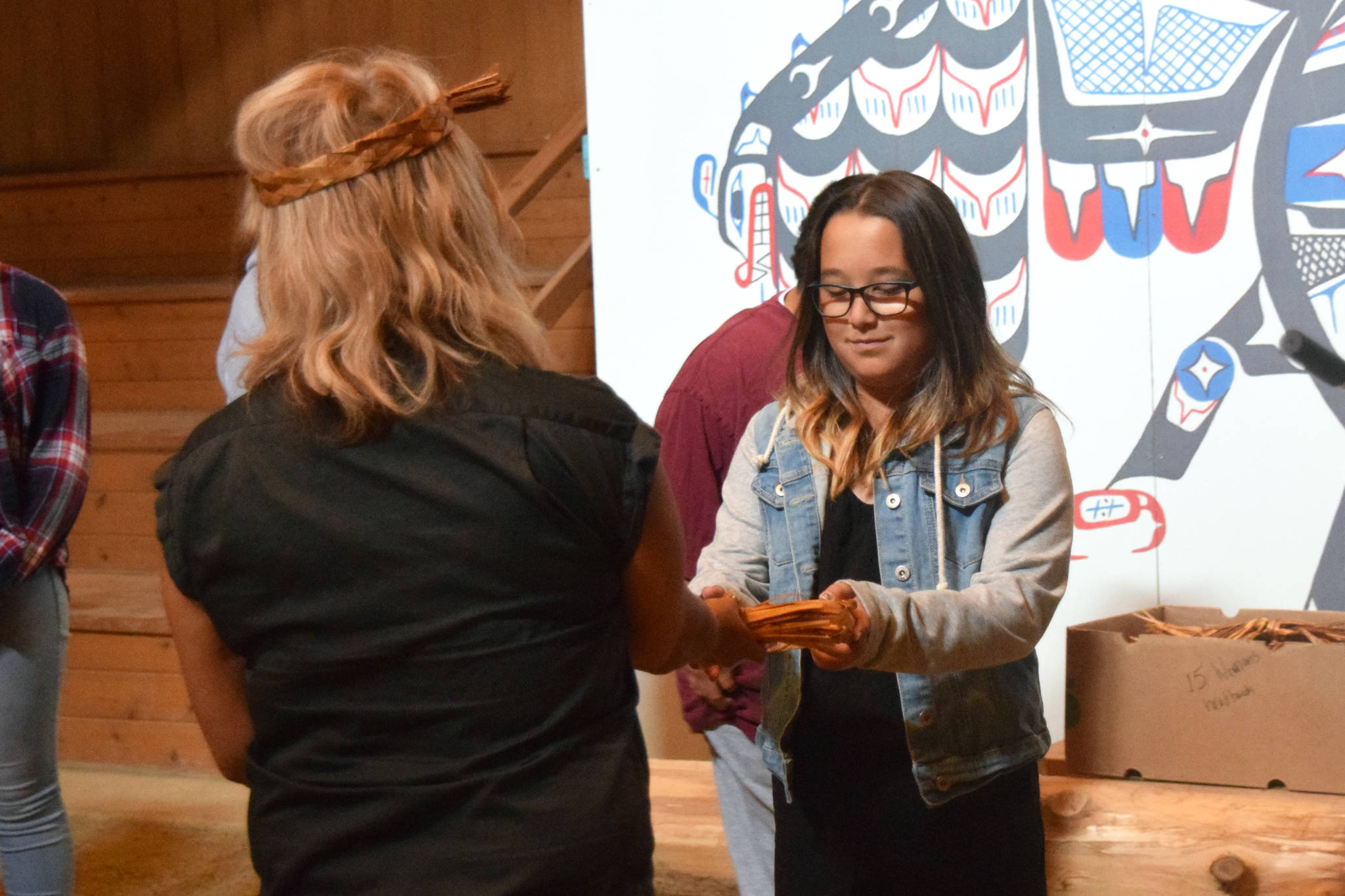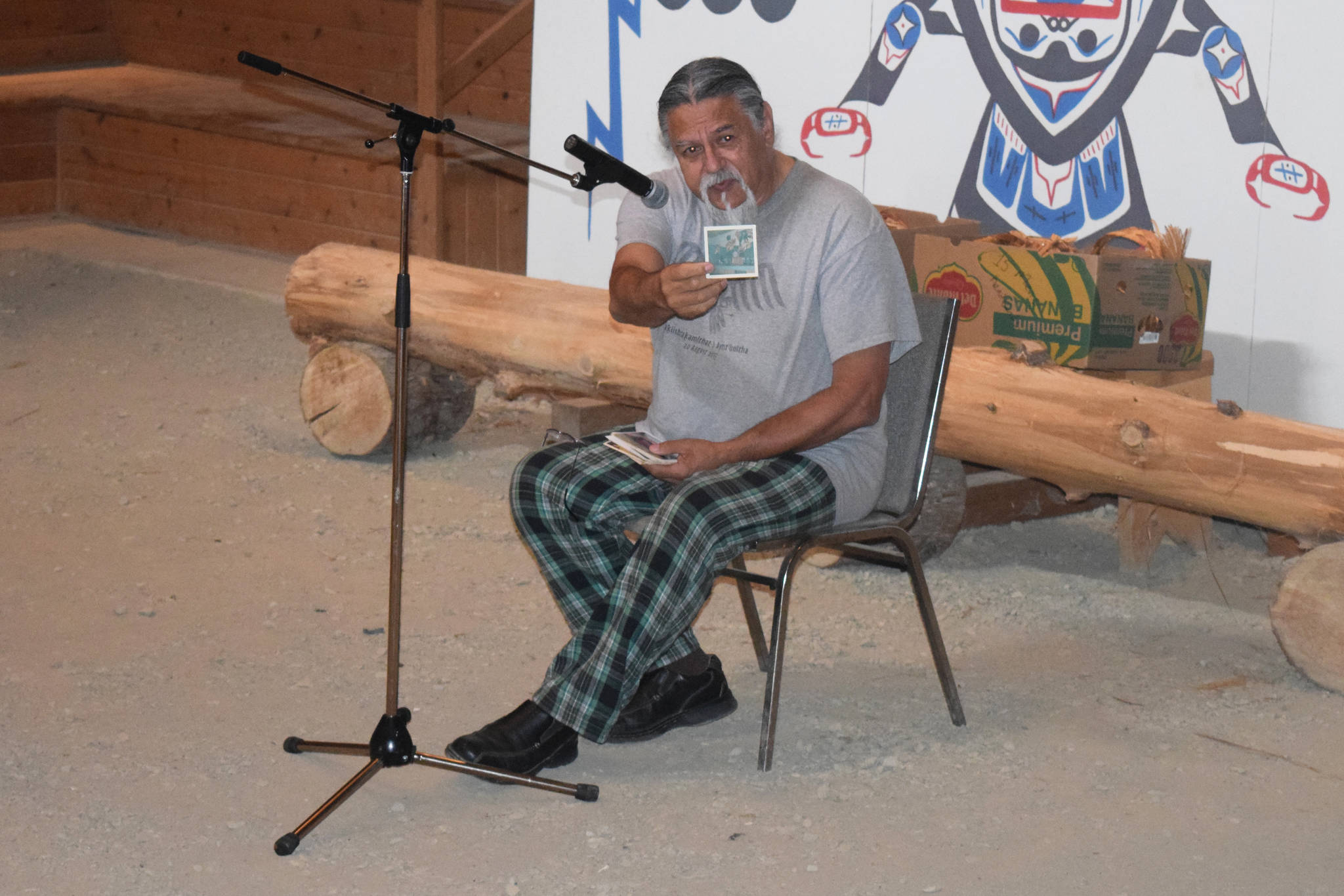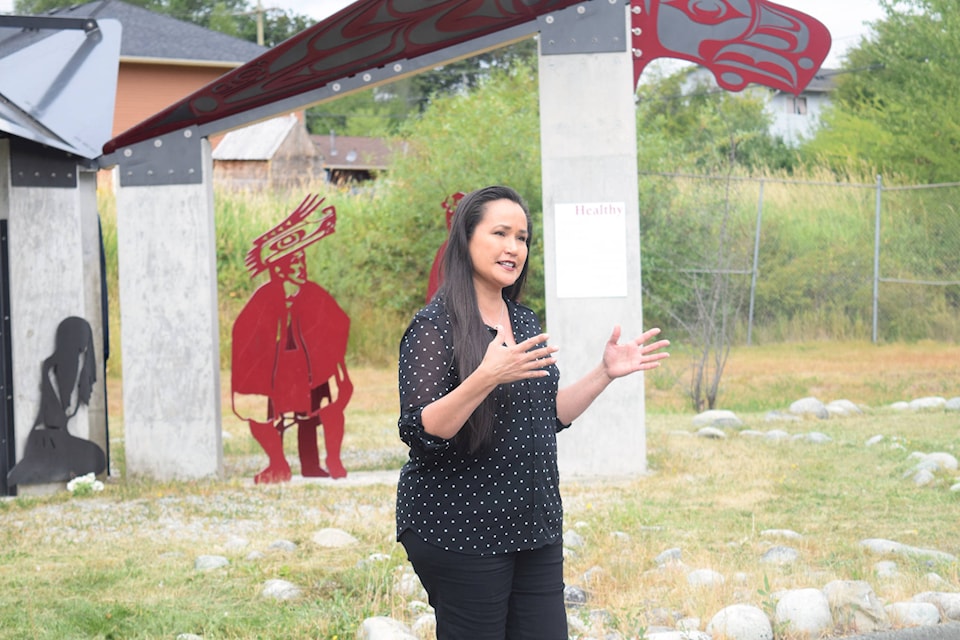“We want to make sure that our hearts are open to our history,” said Haahuupayak Elementary School teacher Trevor Little at the beginning of a Tseshaht First Nation celebration on Thursday, Aug. 2.
Bringing Our Children Home Day was held to recognize the 45-year anniversary of the closure of Alberni Indian Residential School (AIRS). The West Coast District Council of Indian Chiefs (now known as the Nuu-chah-nulth Tribal Council) was able to negotiate the closure of the residential school on Aug. 2, 1973, with the institution’s role in breaking up the family unit cited as a major reason for the decision.
The celebration on Thursday brought together members of Tseshaht First Nation, as well as other nations and guests, to give respect to those who had to send their children to AIRS and those who had to endure their time at the institution.
Martin Watts, the emcee of the event, said the day is about celebrating the rebirth of children in the community. He introduced Strength From Within, a sculpture by artist Connie Watts that stands on the site of the former residential school and commemorates survivors, as well as those who did not make it home.
“This building burned down three times,” said Connie. “You think they would have caught on.”
The sculpture, said Connie, was one of the hardest pieces she has ever made. It consists of three different sections. The first takes place at the residential school, with images of crying children and the shadow of a thunderbird hanging over it. Quotes taken from Nuu-chah-nulth people who shared their experiences with the Truth and Reconciliation report are included.
“Some of them are very hard, but it is the truth of history,” said Connie.
She did not want her project to focus on only this moment, though. The second section, marked by a blue thunderbird, represents healing. The third part, marked by a red thunderbird, represents the healthy Nation.
Shortly after the sculpture was put up, it was vandalized. “It shows that we’re still healing,” Connie said. “There’s animosity that goes with that history.”
Inside the Tseshaht Long House, a few residential school survivors were invited to share their experiences. Ron Hamilton (also known as Haayuups) shared a number of photos that he had taken on the day the school closed. Patricia Watts explained that residential school took away her voice, and she only regained it through culture and song.
Charlie Thompson (also known as Bookwila), said he attended AIRS for 10 years, and was also at the meeting where the West Coast District Council of Indian Chiefs made the decision to close the school.
“They talked about taking over the residential school and running it,” he said. “I don’t remember who it was, but someone said if we do that, we’re in the same position as Indian Affairs. We’re taking children away from their families.”
The Tseshaht people, he said, made the decision to be responsible for their children.
“That’s the significance for me of that day 45 years ago,” said Thompson. “Residential school almost ruined our people—linguistically and culturally.”
Neve Watts, a Haahuupayak School student, spoke in Nuu-chah-nulth at the start of the ceremony. Martin said this was to signify the importance of children in reclaiming language.
“The government tried to take it away by putting our children in residential school,” he said. “Our elders stepped forward to teach our children again.”
The celebration ended with children in the audience presenting woven cedar headbands to residential school survivors and their family members, representing the childhood that was taken away from survivors.
Martin explained that Bringing Our Children Home day is meant to be a day of storytelling. Tseshaht First Nation plans to hold the event again next year, with more people and more stories.
“We’re hoping to fill the hall,” said Martin. “Next year we’ll be back here to celebrate again. We’re celebrating the rebirth of children in our community.”
elena.rardon@albernivalleynews.com


